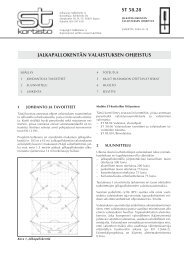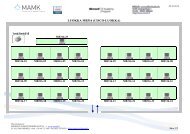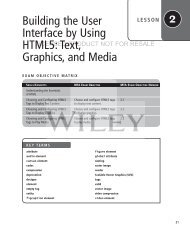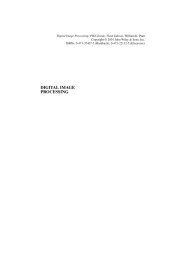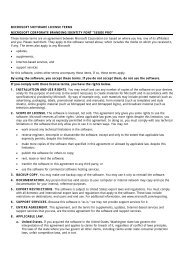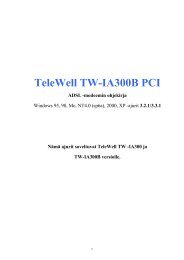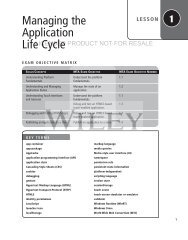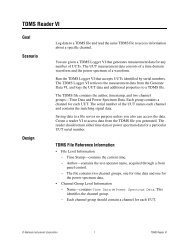Building the User Interface by Using HTML5: Organization ... - server
Building the User Interface by Using HTML5: Organization ... - server
Building the User Interface by Using HTML5: Organization ... - server
You also want an ePaper? Increase the reach of your titles
YUMPU automatically turns print PDFs into web optimized ePapers that Google loves.
<strong>Building</strong> <strong>the</strong> <strong>User</strong> <strong>Interface</strong> <strong>by</strong> <strong>Using</strong> <strong>HTML5</strong>: <strong>Organization</strong>, Input, and Validation | 61<br />
4. Resave <strong>the</strong> file as L3-MyPage-nav.html and <strong>the</strong>n open it in a Web browser. The<br />
navigation links would appear in a Web page as shown in Figure 3-7.<br />
Figure 3-7<br />
Page with newly added<br />
navigation links<br />
LICENSED PRODUCT NOT FOR RESALE<br />
Navigation<br />
links<br />
5. Leave <strong>the</strong> editing tool and Web browser open if you continue to <strong>the</strong> next exercise<br />
during this session.<br />
THE ARTICLE ELEMENT<br />
The article element defines a part of an HTML document that consists of a “selfcontained<br />
composition” that is independent from <strong>the</strong> rest of <strong>the</strong> content in <strong>the</strong> document.<br />
Content set off <strong>by</strong> tags can be distributed in syndication, so think of it as content<br />
that makes sense on its own. (Web syndication is <strong>the</strong> process of making content from<br />
one Web site available to many Web sites.).<br />
TAKE NOTE<br />
*<br />
The W3C encourages use of <strong>the</strong> article element ra<strong>the</strong>r than <strong>the</strong> section element for any<br />
content that could be syndicated<br />
Examples of content suitable for tagging with include a magazine article, a blog<br />
entry, or content for an RSS feed. You can also use <strong>the</strong> article element for About and<br />
Contact content, which are independent from <strong>the</strong> rest of <strong>the</strong> page on which <strong>the</strong>y reside but<br />
aren’t necessarily going to be syndicated.<br />
THE ASIDE ELEMENT<br />
The aside element is used to set off content that’s related to <strong>the</strong> current topic but<br />
would interrupt <strong>the</strong> flow of <strong>the</strong> document if left inline. Essentially, <strong>the</strong> aside element<br />
is used for information that lends itself to sidebars and notes. This content might give<br />
a more detailed look at a topic, offer related reading links, or display definitions for<br />
keywords in <strong>the</strong> paragraph. The aside element doesn’t change <strong>the</strong> position of content<br />
or how <strong>the</strong> content displays; it simply lets <strong>the</strong> browser and search engines know that it’s<br />
related content.



